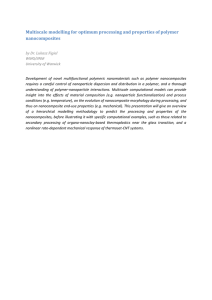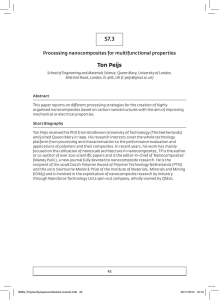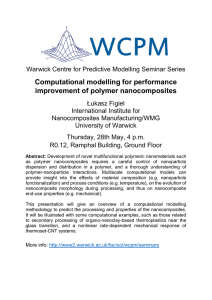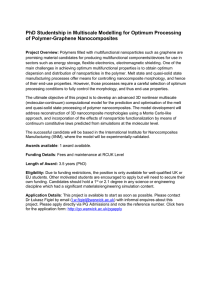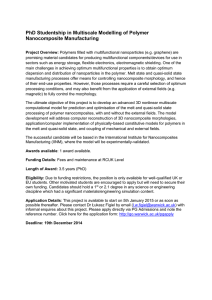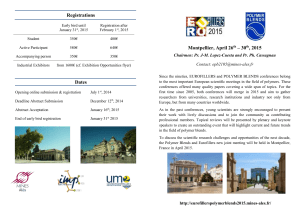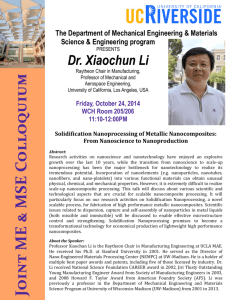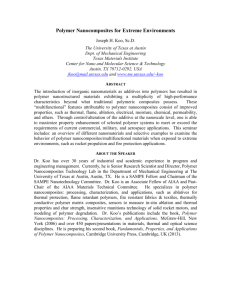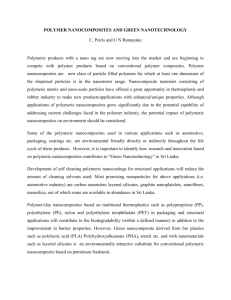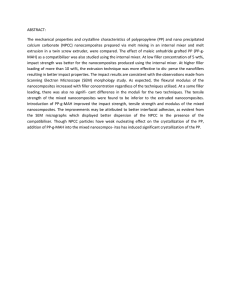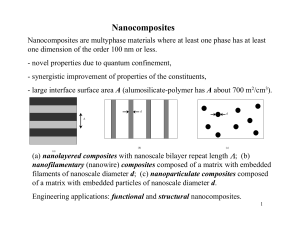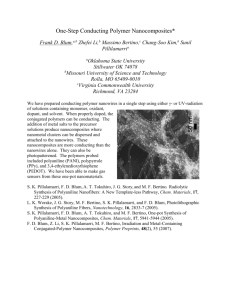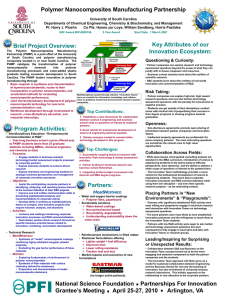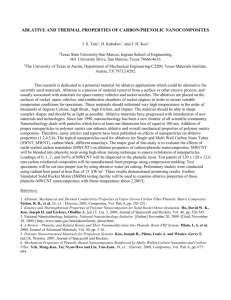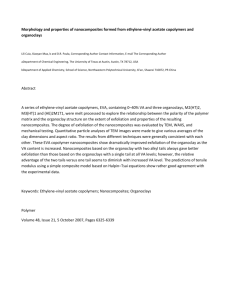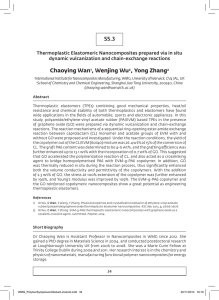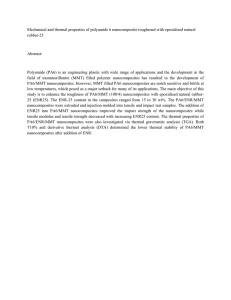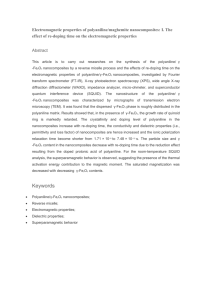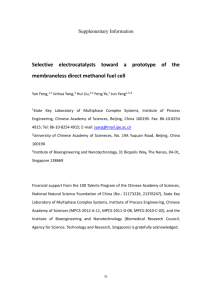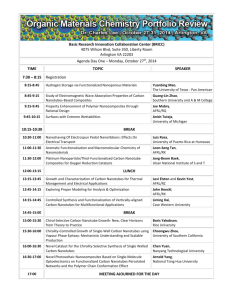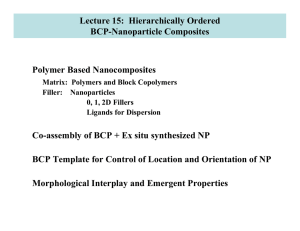electrical, thermal and mass transport in polymer nanocomposites
advertisement
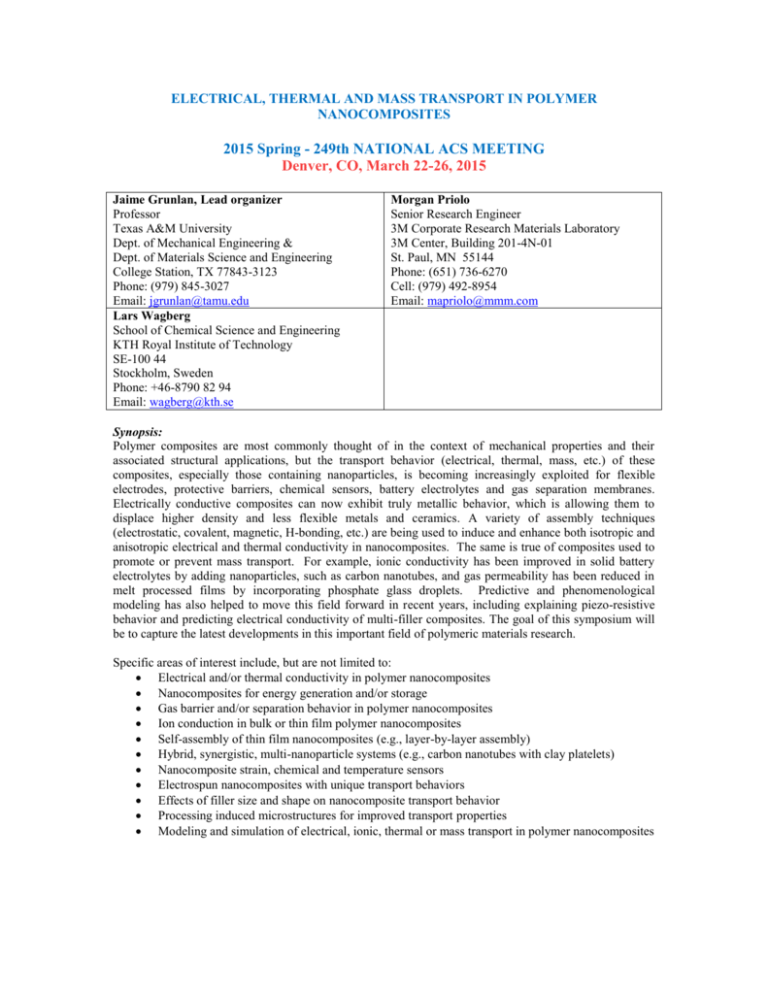
ELECTRICAL, THERMAL AND MASS TRANSPORT IN POLYMER NANOCOMPOSITES 2015 Spring - 249th NATIONAL ACS MEETING Denver, CO, March 22-26, 2015 Jaime Grunlan, Lead organizer Professor Texas A&M University Dept. of Mechanical Engineering & Dept. of Materials Science and Engineering College Station, TX 77843-3123 Phone: (979) 845-3027 Email: jgrunlan@tamu.edu Lars Wagberg School of Chemical Science and Engineering KTH Royal Institute of Technology SE-100 44 Stockholm, Sweden Phone: +46-8790 82 94 Email: wagberg@kth.se Morgan Priolo Senior Research Engineer 3M Corporate Research Materials Laboratory 3M Center, Building 201-4N-01 St. Paul, MN 55144 Phone: (651) 736-6270 Cell: (979) 492-8954 Email: mapriolo@mmm.com Synopsis: Polymer composites are most commonly thought of in the context of mechanical properties and their associated structural applications, but the transport behavior (electrical, thermal, mass, etc.) of these composites, especially those containing nanoparticles, is becoming increasingly exploited for flexible electrodes, protective barriers, chemical sensors, battery electrolytes and gas separation membranes. Electrically conductive composites can now exhibit truly metallic behavior, which is allowing them to displace higher density and less flexible metals and ceramics. A variety of assembly techniques (electrostatic, covalent, magnetic, H-bonding, etc.) are being used to induce and enhance both isotropic and anisotropic electrical and thermal conductivity in nanocomposites. The same is true of composites used to promote or prevent mass transport. For example, ionic conductivity has been improved in solid battery electrolytes by adding nanoparticles, such as carbon nanotubes, and gas permeability has been reduced in melt processed films by incorporating phosphate glass droplets. Predictive and phenomenological modeling has also helped to move this field forward in recent years, including explaining piezo-resistive behavior and predicting electrical conductivity of multi-filler composites. The goal of this symposium will be to capture the latest developments in this important field of polymeric materials research. Specific areas of interest include, but are not limited to: Electrical and/or thermal conductivity in polymer nanocomposites Nanocomposites for energy generation and/or storage Gas barrier and/or separation behavior in polymer nanocomposites Ion conduction in bulk or thin film polymer nanocomposites Self-assembly of thin film nanocomposites (e.g., layer-by-layer assembly) Hybrid, synergistic, multi-nanoparticle systems (e.g., carbon nanotubes with clay platelets) Nanocomposite strain, chemical and temperature sensors Electrospun nanocomposites with unique transport behaviors Effects of filler size and shape on nanocomposite transport behavior Processing induced microstructures for improved transport properties Modeling and simulation of electrical, ionic, thermal or mass transport in polymer nanocomposites
